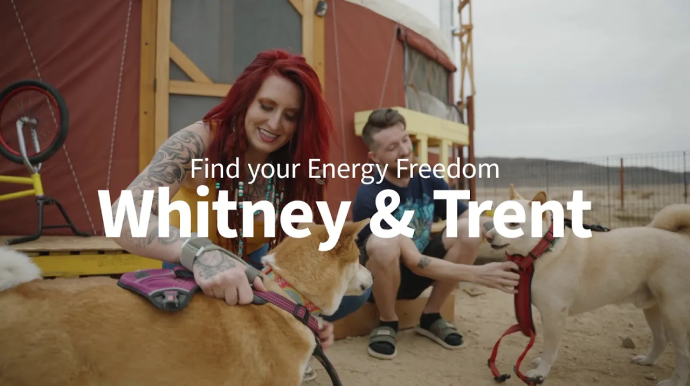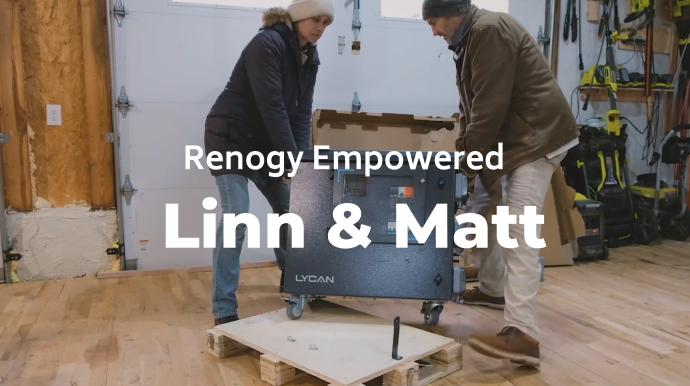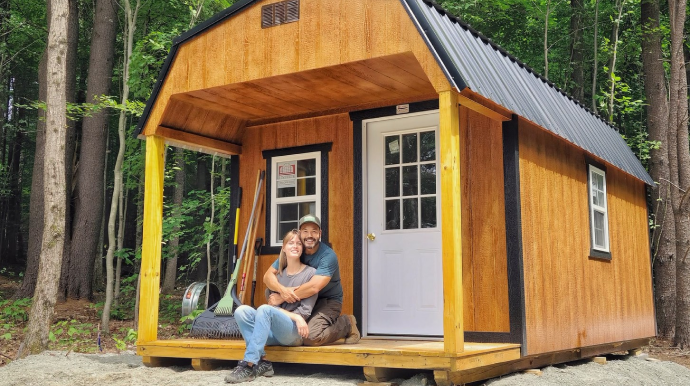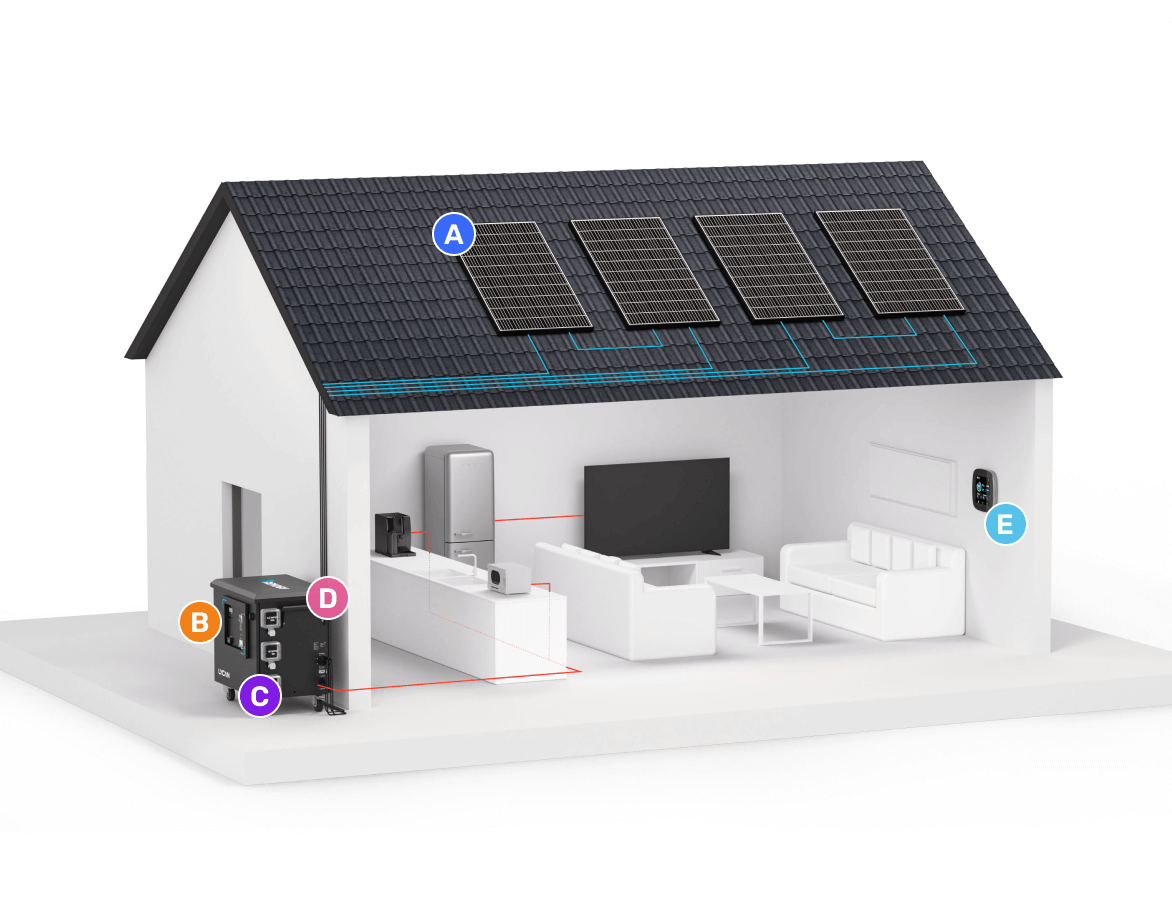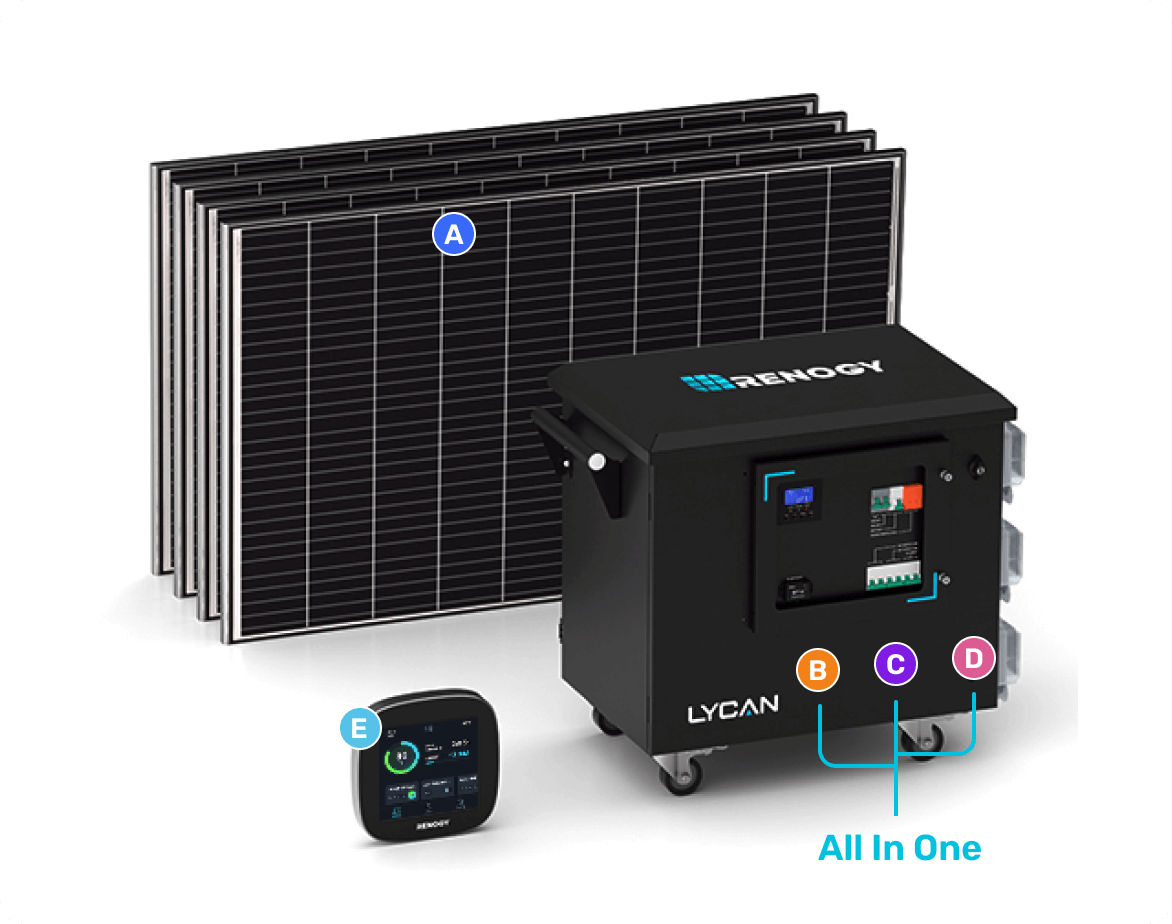For 13 years Renogy has ignited a powerful movement, fueling the dreams of more than 60,000 individuals who dare to live off the grid.
What you need for an off-grid Tiny Home solar system
Below are the five major components of a solar energy system. Renogy’s reliable solar solutions include all of them, plus an additional solar combiner box to protect your system’s circuit.


1.2KW Essential Kit
2.5KW Essential Kit
Top Tiny House Solar Kits
Buy Individual Components
Batteries
Solar Panels
Inverters
Charge Controllers
Monitors
Frequently Asked Questions
How many solar panels and batteries do I need to run an AC?
The number of solar panels and batteries needed to power your AC unit depends on the AC unit’s power consumption, and typical duration of usage. To run a 12000BTU mini-split AC unit (which is commonly used in tiny homes) for several hours per day, we recommend between 1000 and 2000 watts of solar, and between 4 and 8 kilowatt-hours.
How many solar panels or how much solar power do I need for an off-grid tiny home or small cabin?
the number of solar panels needed for an off-grid tiny home depends on your daily energy consumption and the capacity of solar panels.
Can I install a solar system for my off-grid tiny home or small cabin by myself?
Installing a solar system yourself is possible, but it does require some knowledge of electrical systems. If you feel confident and well-informed, go for it! Installing a Renogy AGM tiny home system requires mounting solar panels, connecting panels to circuit breakers and solar inverter chargers, and then connecting the solar inverter charger to the battery bank. Installing a Renogy Lycan tiny home kit simply requires mounting solar panels and connecting them to the Lycan unit. If you have any doubts or want expert guidance, we recommend consulting with a professional or reaching out to our dedicated customer support team. We are here to ensure your solar journey is smooth, successful, and tailored to your specific needs.
Should I mount the solar panels on the roof or on the ground?
Roof mounting is more discreet and utilizes existing space. Ground mounting will take up additional space but offers easier access for cleaning/maintenance.
What is the difference between a 12V and a 48V system?
The voltage refers to the battery bank's capacity. A 12V system has lower voltage but higher current, which is suitable for small setups. A 48V system has higher voltage and lower current, and experiences lower energy losses in the form of heat (due to reduced current flow), resulting in an overall more efficient system.
Can this solution be integrated with a grid tied system?
The answer is yes. This system can be integrated with a grid-tied home and used as a backup/emergency power application. The system is not intended to be tied directly to the grid in such a way that electricity generated by solar may be directly fed back into the grid (such as a fully grid-tied or hybrid solar system is).
How do I size my electrical system requirements?
Calculate your daily energy consumption in watt-hours and consider sunlight availability. Choose panels and batteries to meet or exceed your needs.
How many batteries do I need for an off-grid tiny home or small cabin?
The number of batteries depends on your daily energy consumption and desired days of autonomy.
What is the difference between a normal home solar system and an off grid home solar system?
A normal home solar system is connected to the grid, allowing excess energy to be sent back to the utility. An off-grid solar system operates independently, requiring battery storage for power during periods without sunlight.
Can my system be expanded in the future?
Certainly! Yes, your solar system can be expanded in the future to meet increased energy needs. It is designed to allow for the addition of extra components, such as solar panels or batteries, whenever required, providing you with flexibility and adaptability as your energy requirements change over time.
More questions about your off-grid power system? Call +1 (909)2877111

